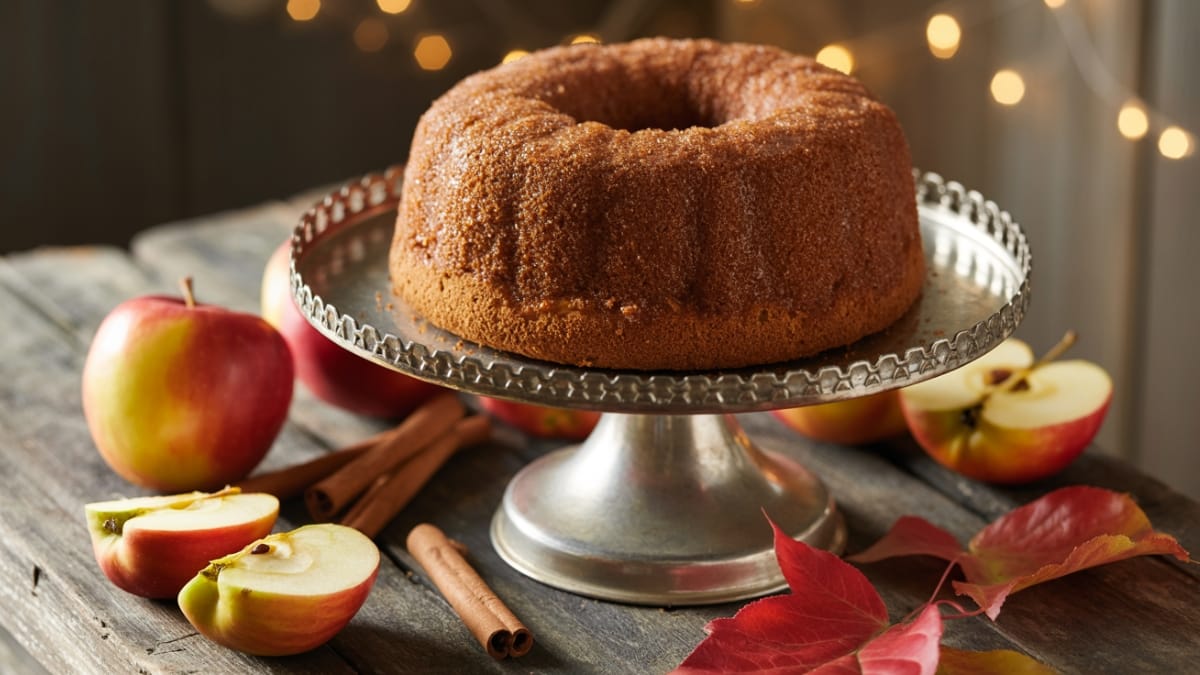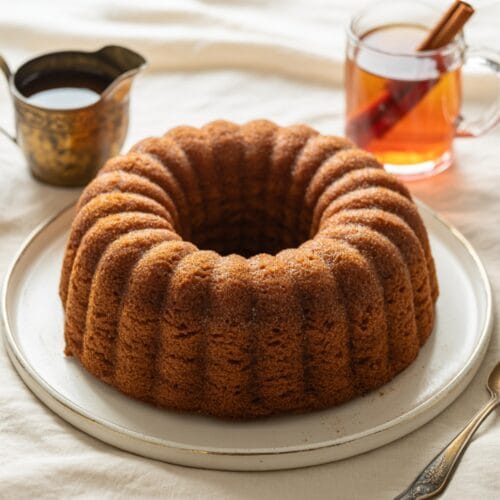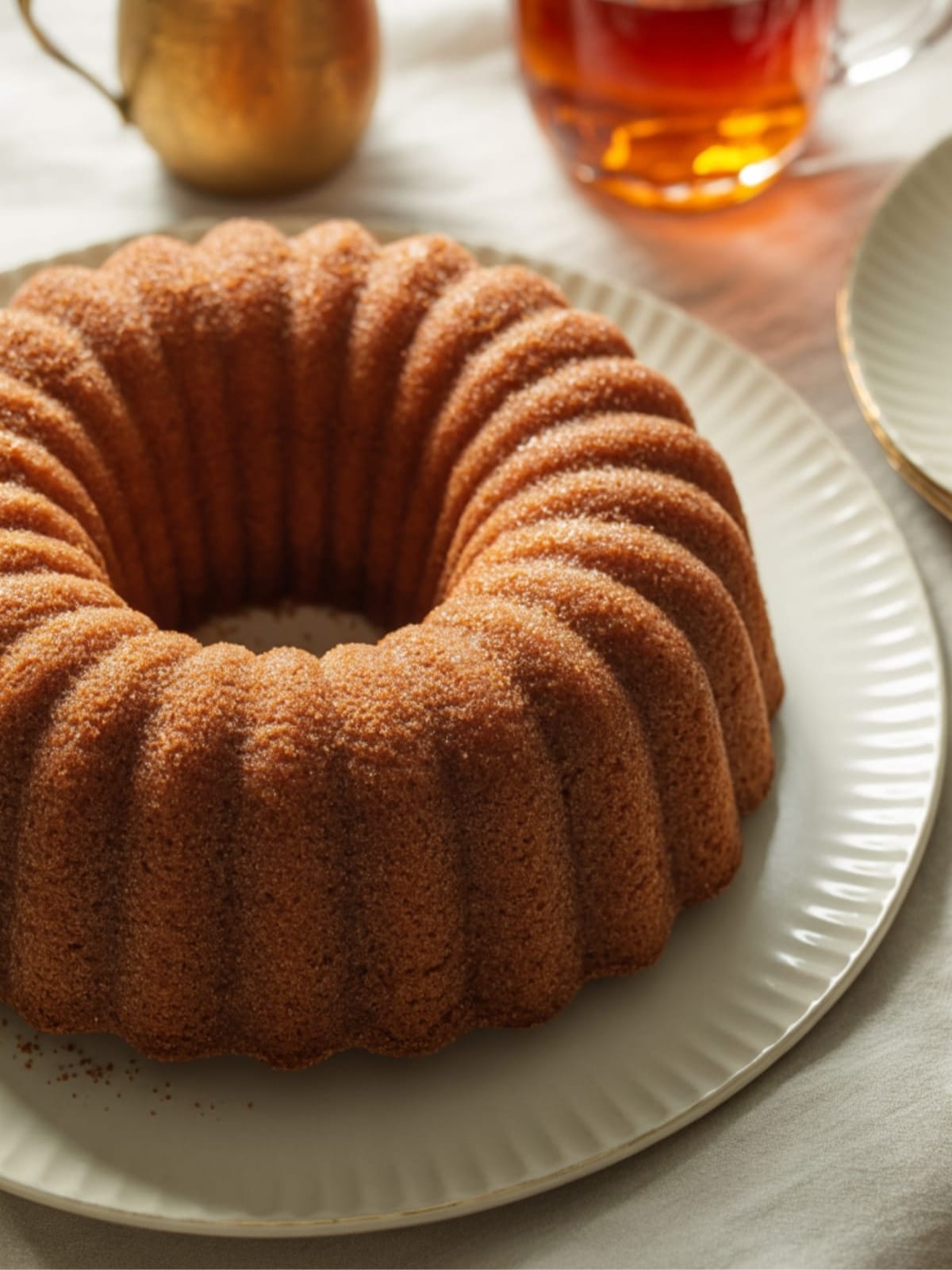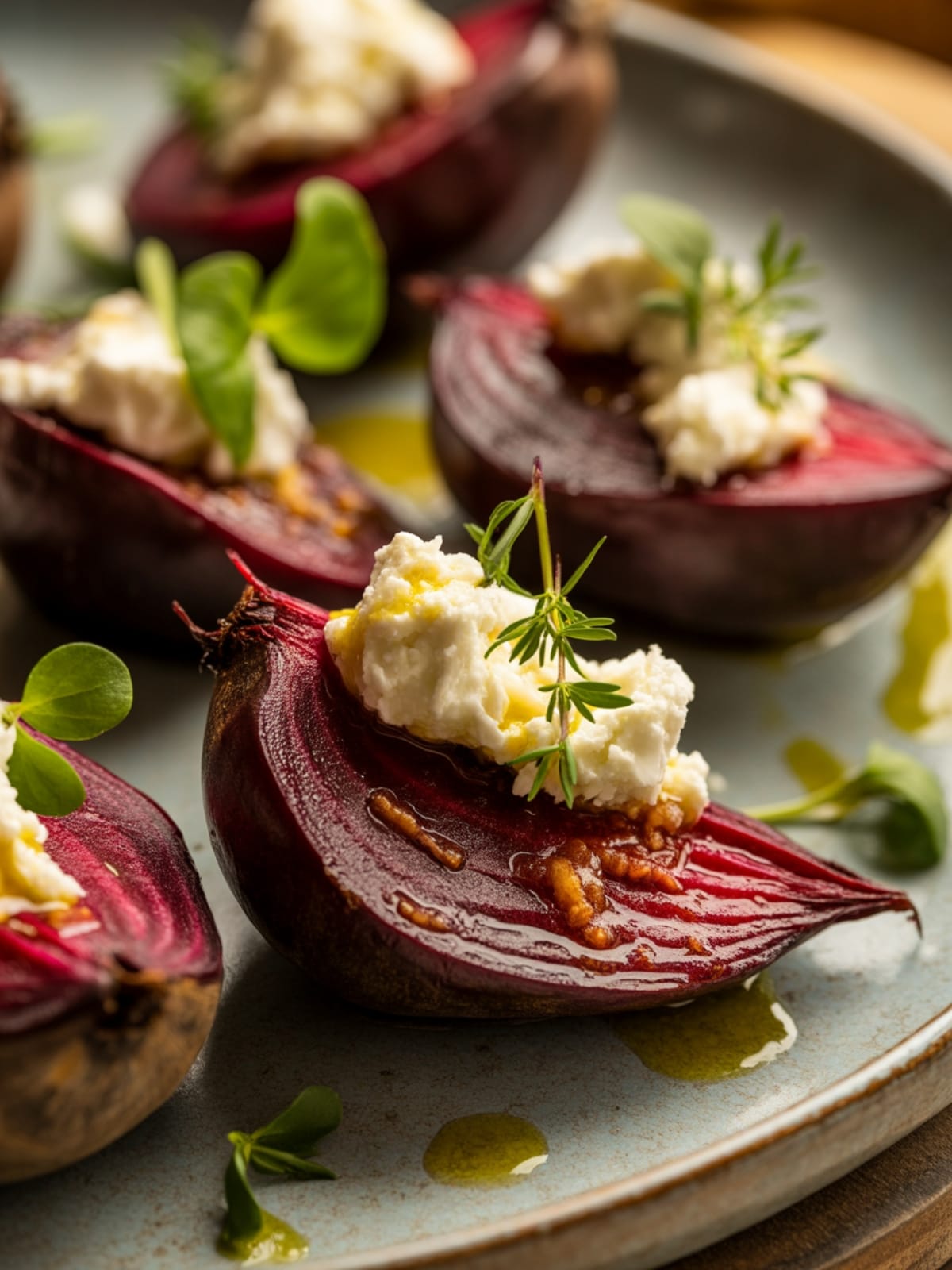When autumn’s crisp air arrives, nothing beckons the season quite like the sweet, spiced aroma of Apple Cider Doughnut Cake wafting through your kitchen. This isn’t just another fall dessert—it’s the comforting taste of apple orchards and hayrides transformed into a heavenly, no-fuss cake that delivers all the charm of those beloved cider doughnuts without standing in line at the farm stand.
I discovered this recipe after years of bringing home bags of cider doughnuts only to find them stale by morning. This cake solves that heartbreak while filling your home with that irresistible apple-cinnamon perfume that practically announces “fall is here!” Let me show you how this humble cake became my family’s most requested autumn tradition.
Why This Recipe is Awesome

This Apple Cider Doughnut Cake brilliantly captures everything we love about those classic orchard treats but in a form that stays fresh for days (though it rarely lasts that long in my house!).
The concentrated apple cider creates an intensely fruity foundation while the buttery crumb maintains that distinctive doughnut-like texture—tender inside with that signature cinnamon-sugar coating that crunches ever so slightly between your teeth.
What makes this recipe truly special is its versatility. It works beautifully as a casual breakfast treat with coffee, an afternoon snack, or dressed up with a scoop of vanilla ice cream for dessert. And unlike actual doughnuts, you don’t need any special equipment or deep-frying skills—just a bundt pan and standard ingredients most bakers already have on hand.
The moment that clinches its greatness?
When that still-warm cake gets brushed with melted butter and rolled in that cinnamon-sugar mixture, creating a coating that takes you straight back to the apple orchard with each heavenly bite.
Equipment needed: 10-inch bundt pan, mixing bowls, measuring cups, measuring spoons, electric mixer, apple cider reduction pot, pastry brush

Apple Cider Doughnut Cake
Ingredients
- 2 cups apple cider reduced to 1/2 cup
- 3 cups all-purpose flour
- 1 1/2 teaspoons baking powder
- 1/2 teaspoon baking soda
- 1 teaspoon salt
- 1 1/2 teaspoons ground cinnamon
- 1/4 teaspoon ground nutmeg
- 1/2 cup 1 stick unsalted butter, at room temperature
- 1/2 cup vegetable oil
- 1 cup granulated sugar
- 1/2 cup light brown sugar packed
- 3 large eggs at room temperature
- 1 teaspoon vanilla extract
- 1/2 cup buttermilk at room temperature
For the cinnamon-sugar coating
- 6 tablespoons unsalted butter melted
- 3/4 cup granulated sugar
- 1 1/2 teaspoons ground cinnamon
Instructions
- Reduce the apple cider by pouring the 2 cups of cider into a small saucepan and bringing it to a simmer over medium-high heat. Continue simmering for about 15-20 minutes until it reduces to 1/2 cup of concentrated cider. Set aside to cool completely.
- Preheat your oven to 350°F (175°C) and generously grease and flour a 10-inch bundt pan, making sure to coat all the nooks and crannies.
- Whisk together the dry ingredients in a medium bowl: flour, baking powder, baking soda, salt, cinnamon, and nutmeg. Set aside.
- Cream the butter, oil, and sugars in a large bowl using an electric mixer on medium speed until light and fluffy, about 3-4 minutes. Don’t rush this step—proper creaming creates that perfect tender crumb.
- Add the eggs one at a time, beating well after each addition. Scrape down the sides of the bowl as needed to ensure everything is evenly incorporated.
- Beat in the vanilla extract and cooled cider reduction until completely combined. The mixture might look slightly curdled, but don’t worry—that’s normal.
- Gradually add the flour mixture in three additions, alternating with the buttermilk (begin and end with flour), mixing on low speed just until combined after each addition. Be careful not to overmix.
- Pour the batter into the prepared bundt pan and smooth the top with a spatula. Tap the pan gently on the counter a few times to release any air bubbles.
- Bake for 45-50 minutes or until a toothpick inserted in the center comes out clean. The top should be golden brown and spring back when lightly touched.
- Allow the cake to cool in the pan for exactly 10 minutes—any longer and the coating won’t adhere properly; any shorter and the cake might break.
- Prepare the coating while the cake is cooling by mixing the sugar and cinnamon in a shallow dish.
- Carefully invert the cake onto a wire rack set over a baking sheet (to catch any sugar drips). Brush the warm cake all over with melted butter, then immediately sprinkle and press the cinnamon-sugar mixture over the entire surface.
- Let the cake cool completely before slicing and serving, allowing the coating to set and form that characteristic cider doughnut crust.
Notes
- The key to this recipe’s intense apple flavor is reducing the cider—don’t skip this step! You can reduce it up to 3 days ahead and keep refrigerated.
- Room temperature ingredients are crucial for achieving the perfect texture, so plan ahead.
- For an extra-special touch, add 1/2 cup of finely chopped dried apple pieces to the batter.
- The cake actually tastes even better the next day, as the flavors have time to meld together.
- Store at room temperature in an airtight container for up to 3 days, or freeze uncoated cake for up to 3 months.
Calories & Nutritional Info
- Calories: Approximately 410 calories per slice
- Fat: 19g (9g saturated)
- Carbohydrates: 57g (35g sugars)
- Protein: 5g
- Dietary considerations: Contains gluten, dairy, and eggs
Common Mistakes to Avoid
- Under-reducing the cider – The cider must be thick and concentrated to impart enough flavor. If it’s still watery, the cake will lack that signature apple taste.
- Overmixing the batter – This develops gluten and results in a tough, dense cake instead of a tender crumb. Mix just until ingredients are incorporated.
- Not greasing the bundt pan thoroughly – Every ridge and crevice needs coating, or your cake will stick and tear when you try to remove it.
- Letting the cake cool too long in the pan – The 10-minute cooling time is precise; any longer and the cake may become too cool to absorb the butter and sugar coating properly.
- Skipping room temperature ingredients – Cold eggs and buttermilk can cause the batter to separate or bake unevenly.
Alternatives & Substitutions
- Dairy-free option: Use plant-based butter and non-dairy milk with 1 tablespoon of vinegar or lemon juice to replace the buttermilk.
- Gluten-free adaptation: Substitute a 1:1 gluten-free flour blend, but add 1/4 teaspoon xanthan gum if the blend doesn’t include it.
- No bundt pan? Use two 9-inch cake pans or a 9×13 baking dish, adjusting baking time accordingly (start checking about 10 minutes earlier).
- Apple juice substitute: In a pinch, use apple juice concentrate (undiluted) instead of reducing fresh cider.
- Spice variations: Add 1/4 teaspoon of cardamom or ginger to the batter for an interesting flavor twist.
FAQs
Can I make this cake ahead of time?
Absolutely! This cake actually develops even better flavor overnight. You can make it up to 2 days ahead, but I recommend adding the cinnamon-sugar coating the day you plan to serve it for the freshest texture.
Why do I need to reduce the apple cider?
Reducing concentrates both the flavor and sugar content while eliminating excess moisture. Regular cider would make the cake too wet and wouldn’t deliver that intense apple flavor that makes this recipe special.
My cake stuck to the bundt pan. What went wrong?
Bundt pans with intricate designs need extra attention. Make sure to thoroughly grease every nook and cranny, then dust with flour. Consider using a baking spray with flour specifically designed for bundt pans.
Can I freeze this cake?
Yes! Freeze the baked cake without the cinnamon-sugar coating. Once thawed, warm slightly in the oven, then brush with butter and apply the coating for that fresh-made taste and texture.
Is apple juice the same as apple cider for this recipe?
No, they’re not interchangeable. Apple cider is unfiltered and has a much more robust flavor. If you absolutely cannot find cider, use apple juice but reduce it even further (to about 1/3 cup) to concentrate the flavors.
Final Thoughts
This Apple Cider Doughnut Cake bridges the gap between bakery-fresh treats and home cooking comfort. It captures autumn’s essence in a way that feels both nostalgic and exciting. Whether you’re a seasoned baker or just starting out, this forgiving recipe delivers the joy of cider doughnuts without the fuss. Go ahead—fill your kitchen with that irresistible spiced apple aroma and create a new fall tradition.






